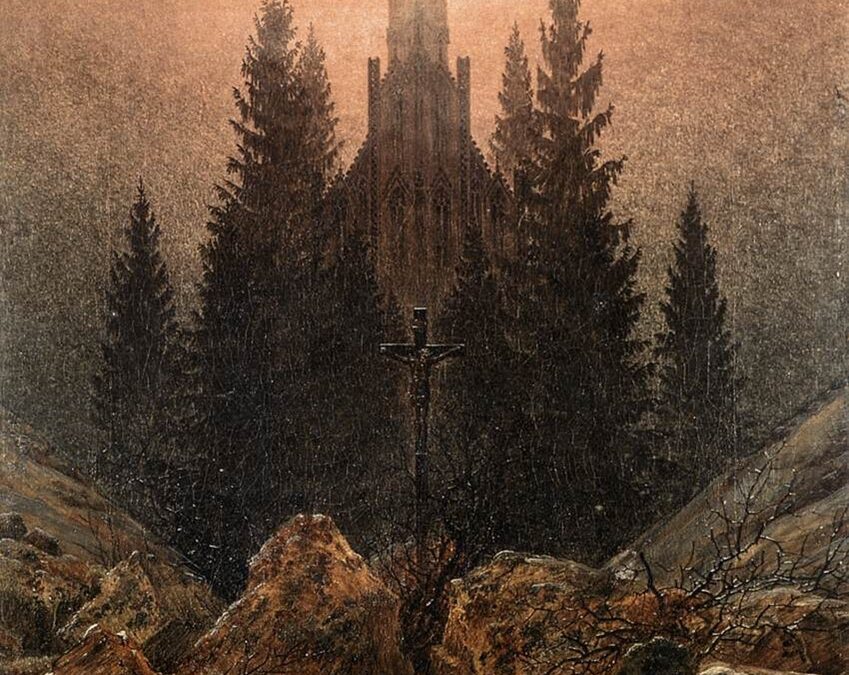The attached painting is by 19th Century German Romantic artist Caspar David Friedrich: Cross and Church in the Mountains, 1812.
As a movement, Romanticism paints emotion, mystery, belonging, and nature on the Enlightenment’s rationalism, science, individualism, and order.
In this particular painting, history climbs from crucifixion to cathedral, foreground to background. Reversed, the church returns priority to the crucifix, still foreground. The Calvary tableau centers where the rock is split in thirds, providing a fountain. (Is it Moses’ water, or death’s tree as life’s source?) Natural imagery parallels religious imagery: dead brush and cross below dark conifers and cathedral.
Rejecting the confidence he could have found elsewhere, Paul charges: “May it never become that I boast if not in the cross of our Lord Jesus Christ, by which the world is crucified to me, and I to the world.”
Whatever God has built through us, may our eye always wander back to the solitary figure restoring heart, mind, and soul to him and each other.
To a week remembering the Savior crucified.
P.S. Friedrich’s paintings are often allegorical. However, allowing your own interaction with the painting is better than seeking its “meaning.” A good artist will provoke in you what you may not even recognize. So trusting your reaction to the painting is not self-indulgent, but an acknowledgment of confidence in the artist. If an artist is good enough, he will merit that trust. Friedrich is, and does.

